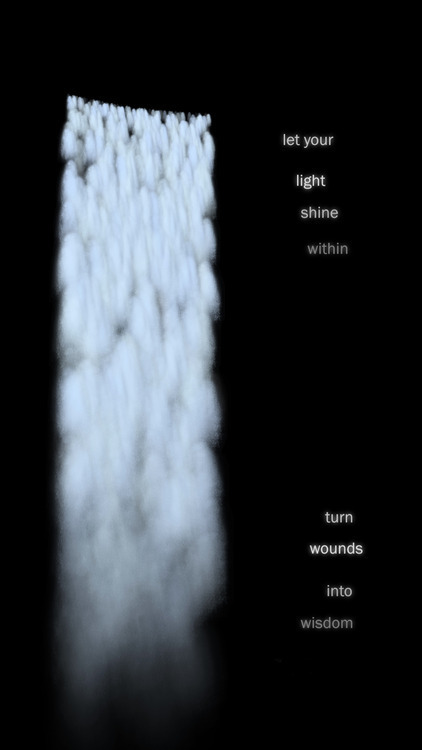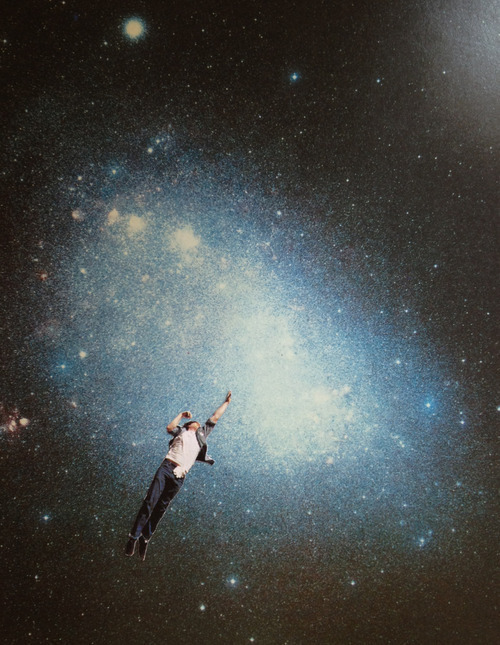In the second part of our interview with Grant Stevens (conducted by Gallery Director Elizabeth East), we learn more about the influences behind his upcoming exhibition at L.A. Louver, and the artists that inspire him:

ELIZABETH EAST: What has been the main inspiration for the work that you will show at L.A. Louver in January 2013?
GRANT STEVENS: The common questions that run through this body of work are around how we seek and find ways to orient ourselves in larger contexts – physical, emotional, spiritual, and so on. That sounds a bit abstract, but I’m thinking about the ways that popular culture and screen-technologies intersect with, or perhaps supplant, traditional models of spiritual reflection and enlightenment. I get quite self-conscious describing these things because they seem almost existential! But this is also what I’m interested in trying to engage with. With new technologies and interfaces, we have new models and forums for identity formation, creative exchange and cultural production. But we seem to be becoming more conditioned towards apathetic, self-conscious and ironic modes of expression. It seems almost impossible to say anything sincere, let alone ‘authentic’. There are so many ways to connect, share, like and LOL, and yet it’s possible that these tools are making us feel more alone, disconnected, overwhelmed and anxious. Social researchers such as Sherry Turkle are starting to grapple with some of these contradictions concerning how we orient ourselves according to these contemporary social, cultural and psychological conditions. One of the things I’m trying to do in this exhibition is deliberately appropriate and manipulate certain clichés and conventions around the ‘search for meaning’ – whether through celebrity-administered self-help, hypothetical models of particle physics, or by drawing on the contemplative potential of colour and galactic metaphors.
EE: Which artists have inspired you? Why?
GS: There are many, and looking at other art is a really important part of my practice. Sometimes it can be one work (like a Richard Artschwager sculpture, a James Turrell light work), one show (Urs Fischer’s 2009 New Museum show), or a complete oeuvre (Franz West, Philippe Parreno, Richard Prince, et al) that shifts your understanding of what art can be. Looking at Ed Ruscha’s work was formative for me. It was at the point in undergrad when I had begun consistently using language in my work, albeit in a pretty naïve way. I’ve admired Ruscha’s practice, his graphic sensibilities and his humor ever since. He can be completely deadpan but sharp and direct at the same time. I find that combination continually compelling and funny.
EE: You have spoken about your work in terms of collage. How do you position yourself in regards to artists who work in collage?
GS: I think about collage in a broad way. I’m interested in it as a model for practice, not just as a means to make photographic or paper objects. Collage, of course, has been a recurrent mode of art making since early Modernity, and it continues to be relevant now. In fact, with creative software and hardware becoming increasingly accessible, as well as the rise of online interfaces and forums for publishing and sharing, you could argue that collage and its equivalents (montage, assemblage, editing, appropriation, remix, etc) are the dominant mode of engaging creatively with the world around us. This goes for art and non-art practices alike. Trying to understand the significance of operations such as selecting, appropriating, fragmenting, cutting, pasting, combining, splicing, and so on is one of the main ongoing considerations of my practice.

EE: How much do you think about the viewer when you are developing your work? As the upcoming show will be primarily seen by U.S.-based and L.A. dominant audience – has this effected any decisions you have made in regards to the work that you will be showing?
GS: This goes back to the earlier point about thinking of exhibitions as constellations. I always consider how shows will function for a viewer. I almost always create scale models of gallery spaces. They help me think about what it would be like to walk in without knowing anything about the show. My main test is to imagine whether I’d look at the works closely or not.
The one ‘site-specific’ aspect of this exhibition is the lenticular work. I’ve used sunset imagery in my work before, and given LA Louver’s location, I really wanted to make something that engaged with the iconic Southern Californian light and colour transitions.
***
In case you missed the first part of this interview, you can read on here. And keep posted on our blog for the third and last part of this interview as Grant recollects about his time in Los Angeles, and reveals what piece of technology he most despises…
To learn more about the artist and his work, here’s a concise video that provides a little more insight into his oeuvre.
“SUPERMASSIVE” will be on view from 17 January - 23 February 2013, and includes sculpture, drawings, collages, photography and video.
IMAGES (top to bottom): Tranquility Falls (video still), 2013, single channel digital video, duration: 3 min 3 sec; Untitled collage (detail), 2012, paper collage on board, 8 5/8 x 6 ¾ in. (22 x 17 cm)
